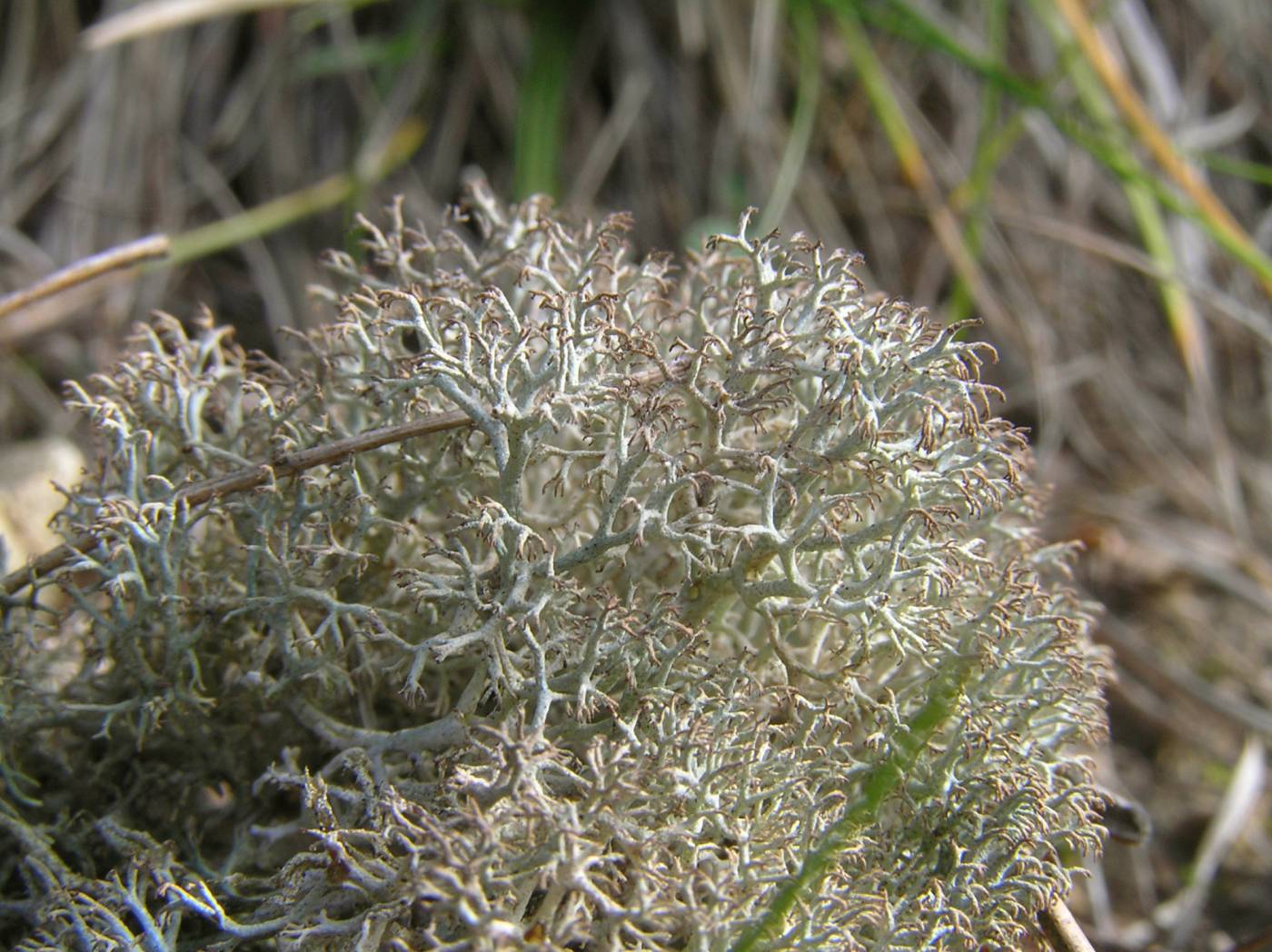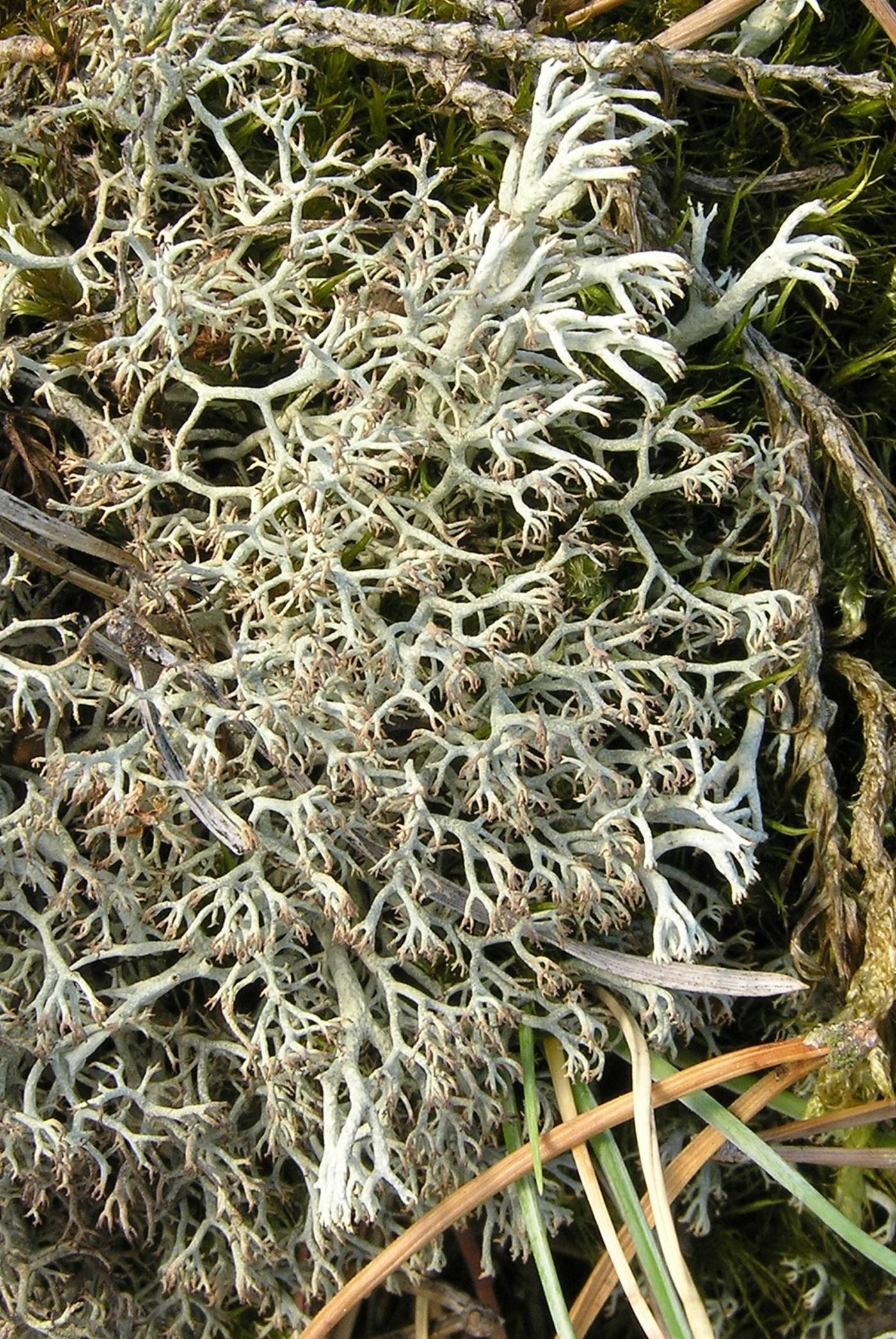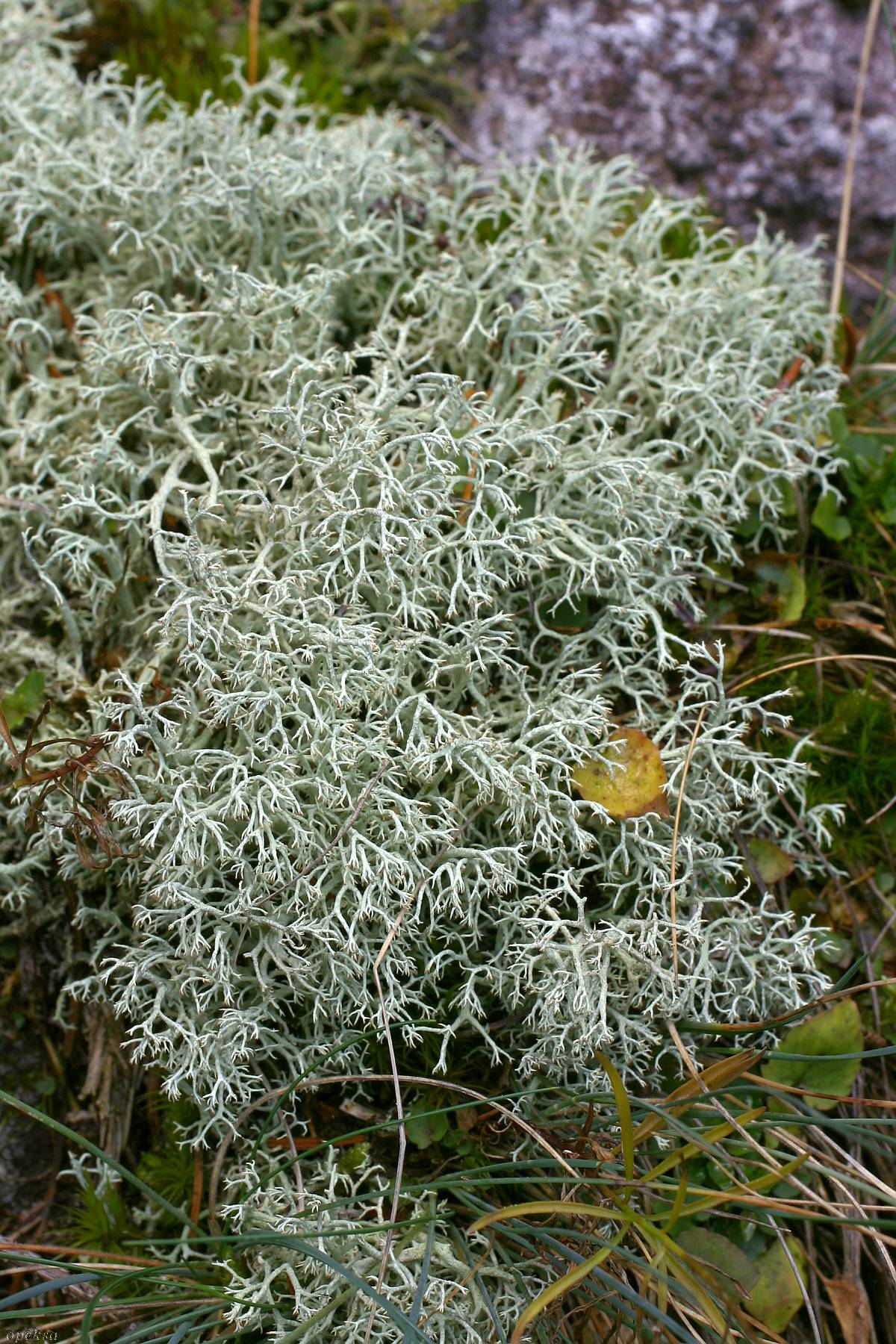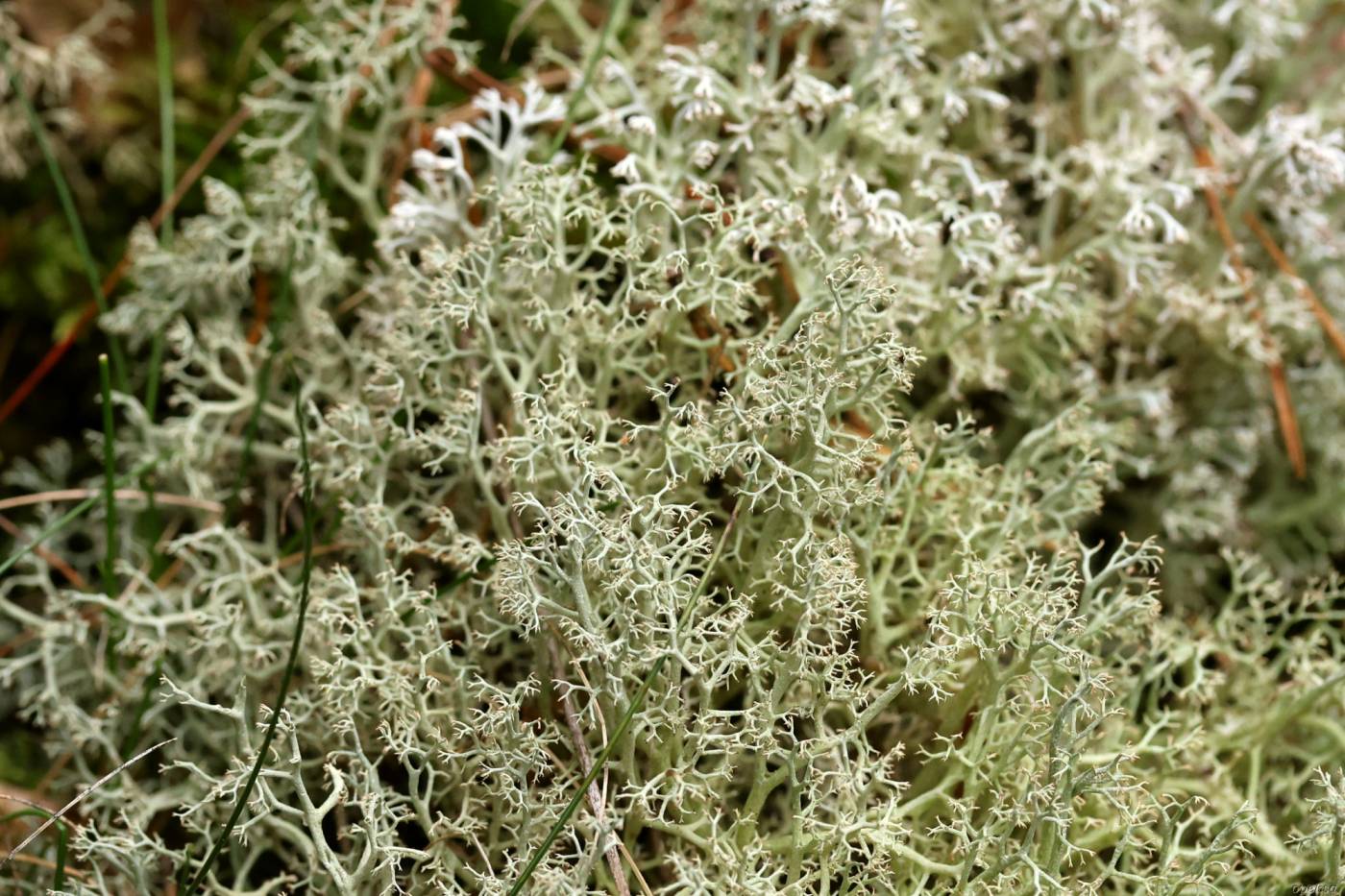A large Cladonia resembling C. arbuscula or C. rangiferina but distinguished by mainly dichotomous branching and a finer thallus composed of thinner main branches, usually less than 1 mm thick (Burgaz et al. 2020). Two chemotypes are known; they differ in the presence of usnic acid. The chemotype containing only fumarprotocetraric acid has an oceanic distribution and its presence in the Czech Republic requires revision. The chemotype with usnic acid, recorded as, e.g., C. tenuis or C. ciliata var. tenuis, is scattered in the western part of the Czech Republic and locally in Moravia, e.g., in Podyjí. It has a subatlantic distribution range in Europe (Litterski & Ahti 2004). Cladonia ciliata grows within terricolous communities on heathlands, sandbanks, dry grasslands, near rock outcrops, in relic pine forests and open acidophilous oak forests. At higher elevations, it is much rarer than the related C. arbuscula and C. rangiferina.
Literature: Litterski B. & Ahti T. (2004): World distribution of selected European Cladonia species. – Symbolae Botanica Upsalienses 34: 205–236. Burgaz A. R., Ahti T. & Pino-Bodas R. (2020): Mediterranean Cladoniaceae. – Sociedad Española de Liquenología (SEL), Madrid.
taxonomic classification:Ascomycota → Lecanoromycetes → Lecanorales → Cladoniaceae → Cladonia
Red List (Liška & Palice 2010):VU – vulnerable
Occurrence in the Czech Republic
All records: 200, confirmed 175. One click on a selected square displays particular record(s), including their source(s).



